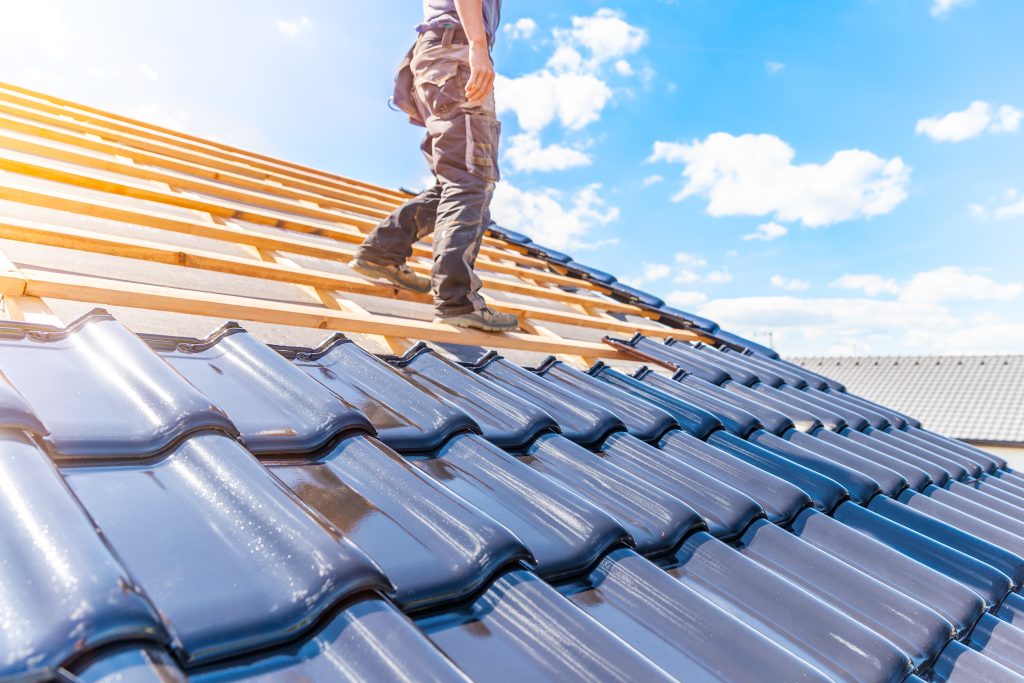The Anatomy Of A Roof

When looking at your home, your roof is probably one of the last things you think about. However, your roof is quite literally part of what holds your house together. Understanding your roof’s components can help you figure out problems and decypher repairs that you may not have thought about before. Your roof helps with heating, cooling, and plumbing in your home, which means that if your roof has issues, those components can have issues, too. Furthermore, having a good understanding of your roof’s structure can help you determine if you need to hire a roofing professional or if you can tackle the project yourself. Here’s a quick breakdown of the anatomy of a roof.
1. Chimney
The anatomy of a roof starts with your chimney, which is more important than it looks! Essentially, a chimney is a vertical pipe constructed of brick that runs through the roof of your home. Its primary function is to transport smoke, gases, and other byproducts generated by your fireplace out of your home. This can help keep your home clean without overheating when you’ve got a fire going.
2. Rafters
Consider rafters to be the skeleton of your roof. Rafters are sloped, using mainly 2x10s or 2x12s depending on the size of your roof. It also extends from the ridge to the wall plates of your home. Not only do rafters provide your home with its shape, but they can also impact the type of shingles you choose when constructing or repairing your roof.
3. Coverings
The covering of your roof acts as a blanket for your home. It is the most visible part when just taking a look at the top of your house. The coverings are what is responsible for protecting your home from weather and damage. Roof coverings come in different materials such as asphalt, metal, slate, clay, and other options.
If you’re looking to go more environmentally friendly, solar tiles and green roofs are also an option. These materials as just as protective, but are also made from recycled materials and repurposed rubber.
4. Flashing
Roof flashings are usually made from galvanized steel. As a key layer, it allows water to be guided away from weaker areas of your roof. When examining your roof, pay close attention to vertical points, such as those surrounding your chimney or plumbing vent. These areas are prime candidates for flashing installation, as their sharp angles can make it easier for water to penetrate and cause damage.
5. Sheathing
The sheathing layer comprises flat wooden boards that firmly attach to your home’s rafters or trusses. Plywood and oriented strand board are the most commonly used materials for sheathing. To create a unified and seamless roofing structure, professional roofers use a nail gun to secure individual panels in place.
6. Underlayment
Underlayment is our first roof feature that is not always present in standard roofs. However, it works as an extra layer of protection against water and storm damage. Underlayment layers are typically installed on roofs with low slopes to help minimalize its vulnerability.
7. Ridge
Think of the ridge as the climax of your roof. It is the highest point from ground level: it is where two sloping roof pieces meet. These ridges are found on most major styles of roofing. A roof’s ridge is an important piece of your home, providing a stable structure as well as venting the top of your home to help it stay cool in the warmer months.
8. Drip Edge
Working as a molding, the drip edge also works to prevent excess moisture and water damage from entering your home. It is attached where your roof’s edge meets your siding – adding an extra layer of protection against leaks and pests from getting into your home.
9. Fascia
Your roof’s fascia is what gives you roof structure. It is comprised of a series of wooden boards that, without them, would allow support to your gutters and downspouts during rain storms.
10. Gutters
Gutter systems play a crucial role in directing rainwater away from your roof and home. By preventing water from pooling on your roof, gutters channel the water away from the home, thus preventing rainwater from seeping into your walls and creating damage inside.
11. Downspouts
Downspouts work hand-in-hand with your gutters. Because of that, they work great in carrying water from the gutters down the side of your home. While some are visible, downspouts can be installed underground to guide water into the streets more easily.
12. Soffits
Soffits serve a dual purpose of functionality and aesthetics, working to keep your home dry. They are positioned underneath the fascia, hanging off the side of your roof, and provide additional protection to your rafters from the elements.
13. Plumbing Vent
The anatomy of a roof for most homes includes plumbing vents – an extra way to reduce pressure in your home’s plumbing system. If you have poor ventilation, it can cause backed-up pipes in your home. While plumbing vents are great to have, if they do get clogged, a professional is necessary to unclog them.
Take Care Of Your Roof With Carolina Custom Contractors
Learning the anatomy of a roof is the first step to starting your roofing project. At Carolina Custom Contractors, it’s our responsibility to help homeowners protect and take care of the roof over their heads. We are here to help as your local Pawley’s Island/Georgetown contractors! Whether you need an inspection or are looking to replace your entire roof, our team of professional contractors is ready to help you! Click here for a free consultation so our team can get a better idea of your project!

